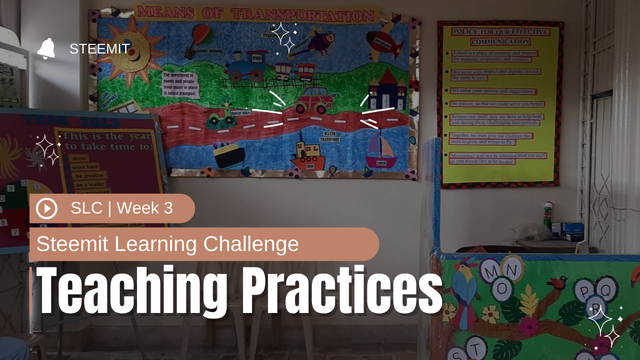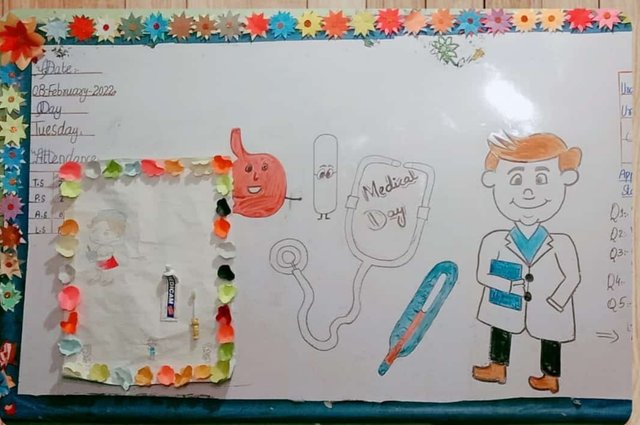SLC | S21W3 : Teaching Practice
Greetings from
Sitaraindaryas (Mahnoor)
Helo my dear friends how are you? I hope all of you will be fine and all are happy here am come to participate in another steemit learning challenge that is related to teaching practices.so, let's start writing on it.

Tell us what your specialty is and what you would like to teach your students in the next one-hour meeting. (1 point)
My specialty is Accounting and Finance and i would like to teach my students in the next one-hour meeting, Now i will teach my students about "Financial Statement Analysis and it's interpretation and utility. For this lesson my specific objectives for the students is to understand the structure and content of financial statements, learn to analyze and interpret key financial ratios and understand how to use financial statement analysis to make informed decisions in managing a business.

Before starting class i will prepare my lesson plan by managing time for each such us 5 minutes for the introduction, 15 minutes for structure and content of financial statements, 20 minutes for analysis and interpretation of financial ratios, 10 minutes for practical examples and case studies and the 10 minutes for discussion and conclusions. That is essential for the accounting and finance students, as it will allow them to develop thier skills to analyze and make decisions based on financial information.
Tell us how learning occurs from start to finish (input-process-output). (2.5 points)
Learning is a continuous process that occurs in three fundamental stages such as the input, process and the output.
Input (10-15% of class time)
In the start tg 10 to 15% is to adjust for the presentation of the topic in which the clear and concise introduction of our learning objectives, Review related concepts to create a solid foundation. Clarifying what students are expected to learn. For example the same that i wrote on the above that In an accounting class, the input might consist of a 10-minute presentation on the topic.
Process (70-80% of class time)
After input we move on to the process that cover the 70 to 80% time of our class, in which we discuss on content development and the detailed explanation of the topic, by using examples. Students work on hands-on activities, discussions, debates, or problem solving. The teacher provides feedback and corrects errors. For example, In my accounting class, the process might consist 60 minutes of the lecture .
Output (10-15% of class time)
In the last 15 minutes we have to discuss on the summary and conclusion of our topic. This input-process-output process ensures a clear and effective structure for the learning, that's allows students to understand and apply the concepts in a meaningful way.
How is it ensured that changes in the cognitive, affective and psychomotor aspects of students occur after the learning activity? (2.5 points)

To ensure changes in the cognitive, affective and psychomotor aspects of students after the learning activity, the following strategies can be implemented:
Cognitive Aspect
Continuous assessment to check understanding of concepts through questions, quizzes or assignments, providing detailed and specific feedback to improve learning, promote problem solving, case studies or projects that require the application of knowledge and review the key concepts and provide opportunities to reinforce learning.
Affective Aspect
Positive climate that's create a welcoming and respectful learning environment. Use motivational techniques, such as rewards, recognition or challenges. Relate content to students’ personal experiences or interests. Encourage reflection and self-assessment to develop self-awareness.
Psychomotor aspect
Hands-on activities to Incorporate the exercises, simulations, or experiments that require motor skills.Promote collaboration and effective communication. Providing feedback on the execution of motor tasks and Verify the acquisition of psychomotor skills through observation and evaluation.
Additional strategies
Using digital tools to promote active learning and to adapt content and activities to students' needs and learning style, track student progress and adjust strategies as needed. Conduct periodic assessments to verify achievement of objectives.
By implementing these strategies, we can be ensured that students experience significant changes in cognitive, affective and psychomotor aspects after the learning activity.
Whether the methods and strategies you use are appropriate, how do you develop methods and strategies in future learning meetings? (1 point)
To develop effective methods and strategies for future learning meetings, I consider the following steps such as the first step is evaluation and reflection to evaluate the current session and analyze what worked well and what didn't.Collect comments and suggestions. Identify areas for improvement. The second step is research and update. I will research into new techniques and technologies and update knowledge on the specific topic.

I will collaboration with other teachers and experts to share experiences and effective strategies. I will participate in learning communities. The adaptation and Innovation may also helpful for me to adaptation of strategies to the needs and learning styles of students and experimentation with new techniques. Set clear goals and objectives.
Implement changes and adjustments.
By following this process, I can develop the effective methods and strategies for future learning encounters, ensuring that students receive a high-quality and relevant education from my side.
Now am going to invite my friends @anasuleidy, @suboohi, @josepha and @stef1 for participating in this challenge.
Regards,
Sitaraindaryas
Thank you!
My participation for Twitter Promotion
https://x.com/sitaraindaryas/status/1856333685835939979?t=tfI1CDR1_JR1e7SHLyzvtA&s=19
Your teaching practice and hard work is truly inspiring! Your efforts will be an example for other students.
Best wishes for the contest dear.
Thank you so much for your support and love.